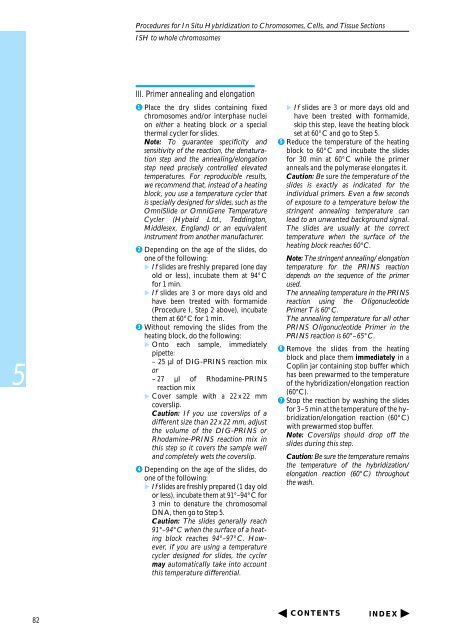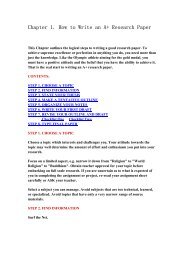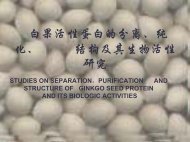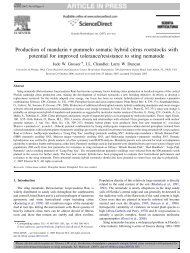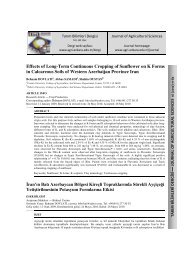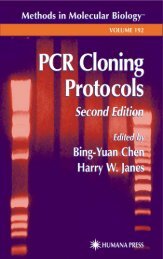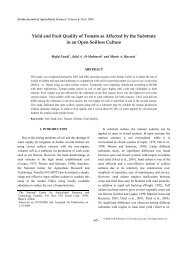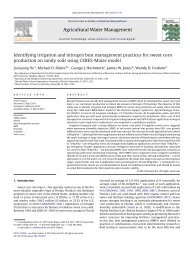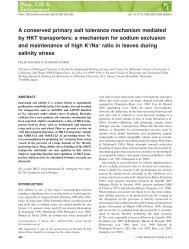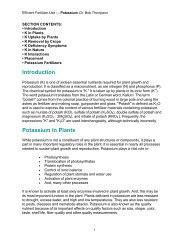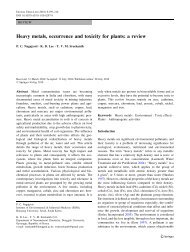General Introduction to In Situ Hybridization
General Introduction to In Situ Hybridization
General Introduction to In Situ Hybridization
Create successful ePaper yourself
Turn your PDF publications into a flip-book with our unique Google optimized e-Paper software.
5<br />
82<br />
Procedures for <strong>In</strong> <strong>Situ</strong> <strong>Hybridization</strong> <strong>to</strong> Chromosomes, Cells, and Tissue Sections<br />
ISH <strong>to</strong> whole chromosomes<br />
III. Primer annealing and elongation<br />
1 Place the dry slides containing fixed<br />
chromosomes and/or interphase nuclei<br />
on either a heating block or a special<br />
thermal cycler for slides.<br />
Note: To guarantee specificity and<br />
sensitivity of the reaction, the denaturation<br />
step and the annealing/elongation<br />
step need precisely controlled elevated<br />
temperatures. For reproducible results,<br />
we recommend that, instead of a heating<br />
block, you use a temperature cycler that<br />
is specially designed for slides, such as the<br />
OmniSlide or OmniGene Temperature<br />
Cycler (Hybaid Ltd., Tedding<strong>to</strong>n,<br />
Middlesex, England) or an equivalent<br />
instrument from another manufacturer.<br />
2 Depending on the age of the slides, do<br />
one of the following:<br />
If slides are freshly prepared (one day<br />
old or less), incubate them at 94°C<br />
for 1 min.<br />
If slides are 3 or more days old and<br />
have been treated with formamide<br />
(Procedure I, Step 2 above), incubate<br />
them at 60°C for 1 min.<br />
3 Without removing the slides from the<br />
heating block, do the following:<br />
On<strong>to</strong> each sample, immediately<br />
pipette:<br />
– 25 µl of DIG-PRINS reaction mix<br />
or<br />
– 27 µl of Rhodamine-PRINS<br />
reaction mix<br />
Cover sample with a 22 x 22 mm<br />
coverslip.<br />
Caution: If you use coverslips of a<br />
different size than 22 x 22 mm, adjust<br />
the volume of the DIG-PRINS or<br />
Rhodamine-PRINS reaction mix in<br />
this step so it covers the sample well<br />
and completely wets the coverslip.<br />
4 Depending on the age of the slides, do<br />
one of the following:<br />
If slides are freshly prepared (1 day old<br />
or less), incubate them at 91°–94°C for<br />
3 min <strong>to</strong> denature the chromosomal<br />
DNA, then go <strong>to</strong> Step 5.<br />
Caution: The slides generally reach<br />
91°–94°C when the surface of a heating<br />
block reaches 94°–97°C. However,<br />
if you are using a temperature<br />
cycler designed for slides, the cycler<br />
may au<strong>to</strong>matically take in<strong>to</strong> account<br />
this temperature differential.<br />
If slides are 3 or more days old and<br />
have been treated with formamide,<br />
skip this step, leave the heating block<br />
set at 60°C and go <strong>to</strong> Step 5.<br />
5 Reduce the temperature of the heating<br />
block <strong>to</strong> 60°C and incubate the slides<br />
for 30 min at 60°C while the primer<br />
anneals and the polymerase elongates it.<br />
Caution: Be sure the temperature of the<br />
slides is exactly as indicated for the<br />
individual primers. Even a few seconds<br />
of exposure <strong>to</strong> a temperature below the<br />
stringent annealing temperature can<br />
lead <strong>to</strong> an unwanted background signal.<br />
The slides are usually at the correct<br />
temperature when the surface of the<br />
heating block reaches 60°C.<br />
Note: The stringent annealing/ elongation<br />
temperature for the PRINS reaction<br />
depends on the sequence of the primer<br />
used.<br />
The annealing temperature in the PRINS<br />
reaction using the Oligonucleotide<br />
Primer T is 60°C.<br />
The annealing temperature for all other<br />
PRINS Oligonucleotide Primer in the<br />
PRINS reaction is 60°–65°C.<br />
6 Remove the slides from the heating<br />
block and place them immediately in a<br />
Coplin jar containing s<strong>to</strong>p buffer which<br />
has been prewarmed <strong>to</strong> the temperature<br />
of the hybridization/elongation reaction<br />
(60°C).<br />
7 S<strong>to</strong>p the reaction by washing the slides<br />
for 3–5 min at the temperature of the hybridization/elongation<br />
reaction (60°C)<br />
with prewarmed s<strong>to</strong>p buffer.<br />
Note: Coverslips should drop off the<br />
slides during this step.<br />
Caution: Be sure the temperature remains<br />
the temperature of the hybridization/<br />
elongation reaction (60°C) throughout<br />
the wash.<br />
CONTENTS<br />
INDEX


